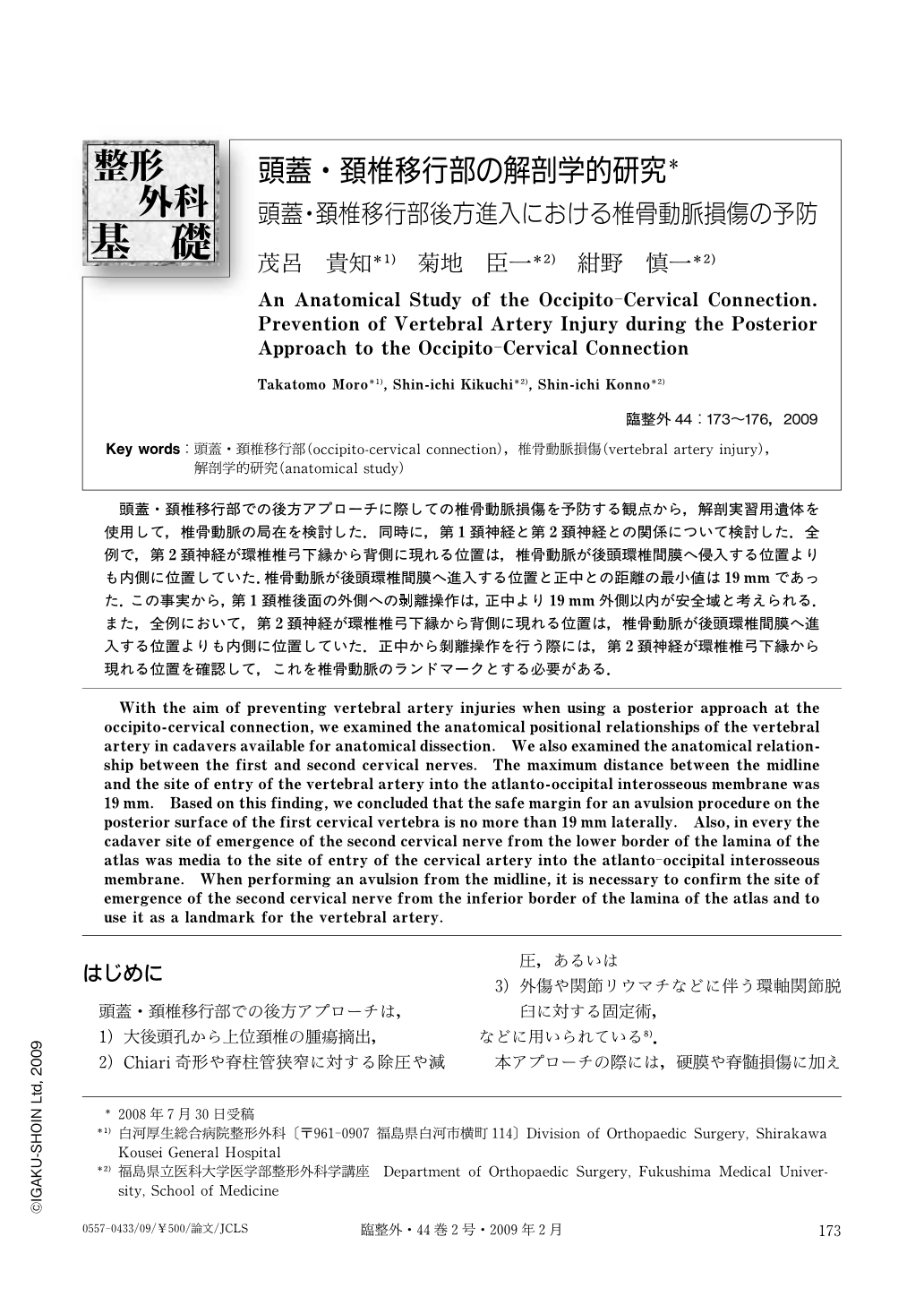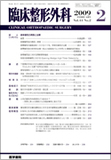Japanese
English
- 有料閲覧
- Abstract 文献概要
- 1ページ目 Look Inside
- 参考文献 Reference
頭蓋・頚椎移行部での後方アプローチに際しての椎骨動脈損傷を予防する観点から,解剖実習用遺体を使用して,椎骨動脈の局在を検討した.同時に,第1頚神経と第2頚神経との関係について検討した.全例で,第2頚神経が環椎椎弓下縁から背側に現れる位置は,椎骨動脈が後頭環椎間膜へ侵入する位置よりも内側に位置していた.椎骨動脈が後頭環椎間膜へ進入する位置と正中との距離の最小値は19mmであった.この事実から,第1頚椎後面の外側へのはく離操作は,正中より19mm外側以内が安全域と考えられる.また,全例において,第2頚神経が環椎椎弓下縁から背側に現れる位置は,椎骨動脈が後頭環椎間膜へ進入する位置よりも内側に位置していた.正中からはく離操作を行う際には,第2頚神経が環椎椎弓下縁から現れる位置を確認して,これを椎骨動脈のランドマークとする必要がある.
With the aim of preventing vertebral artery injuries when using a posterior approach at the occipito-cervical connection, we examined the anatomical positional relationships of the vertebral artery in cadavers available for anatomical dissection. We also examined the anatomical relationship between the first and second cervical nerves. The maximum distance between the midline and the site of entry of the vertebral artery into the atlanto-occipital interosseous membrane was 19mm. Based on this finding, we concluded that the safe margin for an avulsion procedure on the posterior surface of the first cervical vertebra is no more than 19mm laterally. Also, in every the cadaver site of emergence of the second cervical nerve from the lower border of the lamina of the atlas was media to the site of entry of the cervical artery into the atlanto-occipital interosseous membrane. When performing an avulsion from the midline, it is necessary to confirm the site of emergence of the second cervical nerve from the inferior border of the lamina of the atlas and to use it as a landmark for the vertebral artery.

Copyright © 2009, Igaku-Shoin Ltd. All rights reserved.


